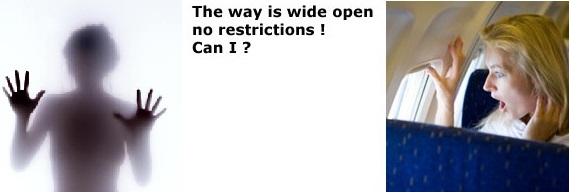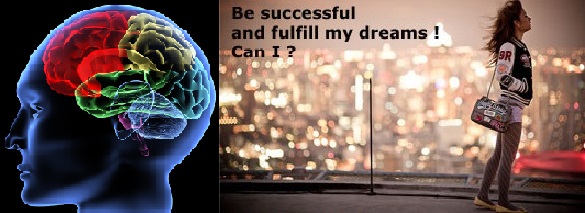
Erectile Dysfunction
Treatment for men unable to have an erection took a great leap forward when the first oral erectile dysfunction medication, Viagra, sildenafil, was introduced in 1998. But there have been strides recently in a host of other erectile dysfunction treatments, ranging from over-the-counter pumps to surgical implants and suppositories.
Diagnosing your own erectile dysfunction is not a good idea, however. If you have troublegetting an erection, it's important to see a doctor before pursuing any sort of treatment. There could be amedical explanationfor your condition, and your health and sexual history may come into play.
Erectile dysfunctionorimpotenceissexual dysfunctioncharacterized by the inability to develop or maintain anerectionof thepenisduringsexual activity.A penile erection is thehydrauliceffect of blood entering and being retained in sponge-like bodies within the penis. The process is most often initiated as a result ofsexual arousal, when signals are transmitted from thebraintonervesin the penis. The most important organic causes arecardiovascular diseaseanddiabetes, neurological problems (for example, trauma fromprostatectomysurgery),hormonalinsufficiencies (hypogonadism) anddrug side effects.
Psychologicalimpotence is where erection or penetration fails due to thoughts or feelings (psychological reasons) rather than physical impossibility; this is somewhat less frequent but can often be helped. Notably in psychological impotence, there is a strongresponse to placebo treatment. Erectile dysfunction can have severe psychological consequences as it can be tied to relationship difficulties and masculine self-image generally.
Besides treating the underlying causes such as potassium deficiency or arsenic contamination of drinking water, the first line treatment of erectile dysfunction consists of a trial of PDE5 inhibitordrugs (the first of which wassildenafilor Viagra). In some cases, treatment can involveprostaglandintablets in theurethra, injections into the penis, apenile prosthesis, apenis pumporvascular reconstructive surgery.
The Latin termimpotentia coeundidescribes simple inability to insert the penis into thevagina; it is now mostly replaced by more precise terms, such aserectile dysfunction. The study of erectile dysfunction within medicine is covered byandrology, a sub-field withinurology. Researchthat erectile dysfunction is common, and it is suggested that approximately 40% of males suffer from erectile dysfunction or impotence, at least occasionally.
Erectile dysfunction represents a substantial burden upon public health. Studies have estimated that approximately 50% of the male population aged between 40 and 70 years will suffer from Erectile dysfunction at some stage, with 10% of these affected severely. On average, a general practitioner is estimated to see between one and five new cases of Erectile dysfunction per month, and the impact upon the psychosocial health of the sufferer and his relationships may be considerable. Erectile dysfunction is defined as the persistent inability to achieve or maintain penile erections of sufficient value to engage in satisfactory sexual activity. Impotence tends not to be used as a descriptive terminology currently as it is felt to imply failure.
Many physical causes of Erectile dysfunction exist, with only 10–20% of sufferers believed to have a solely psychological cause. There are many organic causes for Erectile dysfunction, with the majority of these based upon vascular insufficiency.
Erectile dysfunction, sometimes called impotence, is the inability to get or keep an erection firm enough for sexual intercourse. The condition has become highly visible in recent years, but that doesn’t make it any more welcome for the 5 to 15 percent of men whose sex lives are affected.
The disorder can occur at any age, but is more common in men over age 75. In middle aged men, Erectile dysfunction can signal risk of a heart attack.
The same cholesterol plaques that can build up in the arteries surrounding the heart can also affect arteries that go through penile tissue. Once doctors rule psychological causes, "they need to do a cardiac workup to make sure that this guy is not on the verge of getting a heart attack.
Understanding all about Erectile Disorder
To understand what causes erectile dysfunction, it is important to first review how an erection occurs. For a man to have an erection, a complex process takes place within the body.
An erection involves the central nervous system, the peripheral nervous system, psychological and stress-related factors, local factors with the erection bodies or the penis itself, as well as hormonal and vascular (blood flow or circulation) components. The penile portion of the process leading to an erection represents only a single component of a very complicated and complex process.
Erections occur in response to touch, smell, and auditory and visual stimuli that trigger pathways in the brain. Information travels from the brain to the nerve centers at the base of the spine, where primary nerve fibers connect to the penis and regulate blood flow during erections and afterward.
Sexual stimulation causes the release of chemicals from the nerve endings in the penis that trigger a series of events that ultimately cause muscle relaxation in the erection bodies of the penis. The smooth muscle in the erection bodies controls the flow of blood into the penis. When the smooth muscle relaxes, the blood flow dramatically increases, and the erection bodies become full and rigid, resulting in an erection. Venous drainage channels are compressed and close off as the erection bodies enlarge.
Detumescence (the process by which the penis becomes flaccid) results when muscle-relaxing chemicals are no longer released.
If one or more of the above physical and/or psychological processes is disrupted, erectile dysfunction can result. Erectile dysfunction describes a man's inability to achieve and maintain an erection of his penis sufficient for mutually satisfactory intercourse with his partner.
In general, the cause of erectile dysfunction is divided into 2 types. Many men will have both:
Psychological Causes
Erection problems usually produce a significant psychological and emotional reaction in most men. This is often described as a pattern ofanxietyand stress that can further interfere with normal sexual function. This "performance anxiety" needs to be recognized and addressed by your doctor.
For some men, erectile dysfunction develops with age or may be related to depression or another psychological cause, such as widower syndrome.
Certain feelings can interfere with normal sexual function, including feeling nervous about or self-conscious about sex; feeling stressed either at home or at work; or feeling troubled in your current relationship. In these cases, psychological counseling with you and your sexual partner may be successful. One episode of failure, regardless of cause, may propagate further psychological distress leading to further erectile.
Physical (Organic) Causes
Physical causes for erectile dysfunction are much more common than psychological causes. In determining a physical (or organic) cause, your doctor will first rule out certain conditions, such ashigh blood pressure,high cholesterol, heart and vascular disease, low male hormone level,prostate cancer, and diabetes, which are associated with erectile dysfunction. In addition to these conditions, certain systemic and respiratory diseases are known to result in erectile dysfunction:
Scleroderma (stiffening or hardening of the skin)
Kidney failure
Livercirrhosis
Hemachromatosis (too much iron in the blood)
Chronic obstructive pulmonary disease.
Often, one can restore sexual health by treating a condition such as high blood pressure with diet and/orexerciseor by controlling diabetes or other chronic diseases. Nutritional states, including malnutrition and zinc deficiency, may be associated with erectile dysfunction and can also be treated with diet.
Almost any disease can affect erectile function by altering the nervous, vascular, or hormonal systems. Various diseases may produce changes in the smooth muscle tissue of the penis or influence mood and behavior.
Diseases that affect the nervous system and are commonly associated with erectile dysfunction include:
Epilepsy
Stroke
Multiple sclerosis
Guillain-Barré syndrome
Alzheimer disease
Parkinson disease
Vascular diseases account for nearly half of all cases of erectile dysfunction in men older than 50 years.
Vascular disease includesatherosclerosis(fatty deposits on the walls of the arteries, also called hardening of the arteries), a history of heart attacks,peripheral vascular disease(problems with blood circulation), and high blood pressure.
Prolonged tobacco use (smoking) is considered an important risk factor for erectile dysfunction because it is associated with poor circulation and its impact on cavernosal function.
Blood diseases, such as sickle cellanemiaand leukemias, are also associated with erectile dysfunction.
An imbalance in your hormones, such as testosterone, prolactin, orthyroid, can cause erectile dysfunction. The following hormonal (or endocrine) conditions are commonly associated with erectile dysfunction:
Hyperthyroidism(overactive thyroid gland)
Hypothyroidism(underactive thyroid gland)
Hypogonadism (leads to lower testosterone levels)
Medications
Medications used to treat other medical disorders may cause erectile dysfunction. If you think erectile dysfunction is caused by a medication, talk with your doctor about drugs that might not cause this side effect. Do not just stop taking a prescribed medication before talking with your doctor. Common medications associated with erectile dysfunction are:
Antidepressants(for depression)
Antipsychotics (for psychological illness)
Antihypertensives (for high blood pressure)
Antiulcer drugs, such ascimetidine(Tagamet)
Medications to treat prostate cancer, such asgoserelin(Zoladex) andleuprolide(Lupron), and medications to treat benign enlargement of the prostate, such asfinasteride(Proscar) anddutasteride(Avodart)
Drugs that lower cholesterol (More studies are needed to determine if erectile dysfunction is actually due to the high cholesterol in the blood vessels or the drugs to lower the high cholesterol.)
Alcohol abuse
Mind-altering agents, such as marijuana and cocaine
Surgical Causes
Surgery in the pelvic area may injure the nerves and the arteries near the penis, resulting in erectile dysfunction. Also, surgical procedures on the brain and the spinal cord may cause erectile dysfunction. Those procedures often associated with erectile dysfunction include:
Aortoiliac or aortofemoral bypass
Abdominal perineal resection
Proctocolectomy
Radical prostatectomy
Radiation therapy for prostate cancer as well as for other cancers, such asbladder cancer,colon cancer, orrectal cancer
Brachytherapy (seed implants) for prostate cancer
Cryosurgery of the prostate
Cystectomy (removal of the urinary bladder)
Traumatic Causes
Trauma or injury to the penis and/or the pelvic blood vessels and nerves is another potential factor in the development of erectile dysfunction.
Peyronie's disease is a condition associated with erectile dysfunction. With this disease, scar tissue forms inside the penis, and the penis is usually bent or curved during an erection. Injuries to the penis may also result in scar tissue formation as well as penis curvature during an erection.
Bicycle riding for long periods has also been implicated as a cause of erectile dysfunction. Some of the newer bicycle seats have been designed to soften pressure on the perineum (the soft area between the anus and the scrotum).
Next Steps
Currently, virtually any man who wishes to have an erection can obtain it, regardless of the underlying cause of his problem. Many reasonable treatment options exist. Your first step is to find a well-trained, experienced, and compassionate doctor who is willing to take the time to understand you as well as to fully examine you to discover the cause of erectile dysfunction. Together, you and your doctor can then discuss possible treatments.

Pain duringsexualintercourse. There are many causes of dyspareunia, including vaginal infection or dryness. Treatment is directed toward the underlying cause and vaginal lubricant jelly can be of help.
Dyspareunia is painfulsexual intercourse, due to medical or psychological causes. The term is used almost exclusively in women, although the problem can also occur in men. The causes are often reversible, even when long-standing, but self-perpetuating pain is a factor after the original cause has been removed.
Dyspareunia is considered to be primarily a physical, rather than an emotional, problem until proven otherwise. In most instances of dyspareunia, there is an original physical cause. Extreme forms, in which the woman's pelvic floor musculature contracts involuntarily, is termedvaginismus.
Numerous medical causes of dyspareunia exist, ranging from infections candidiasis, chlamydia, trichomoniasis, urinary tract infections, endometriosis tumors, xerosis - dryness, especially after the menopause - and LSEA.
Dyspareunia may result from female genital mutilation, when the introitus has become too small for normal penetration - often worsened by scarring.
Physical Causes
Because there are numerous physical conditions that can contribute to pain during sexual encounters, a careful physical examination and medical history are always with such complaints. In women, common physical causes for coital discomfort include infections of the vagina, lower urinary tract, cervix, or fallopian tubes e.g., mycotic organisms - esp. candidiasis, chlamydia, trichomonas, coliform bacteria; endometriosis; surgical scar tissue - following episiotomy; and tumors.
In addition to infections and chemical causes of dyspareunia such as monilial organisms and herpes, anatomic conditions, such as hymenal remnants, can contribute to coital discomfort. Estrogen deficiency is a particularly common cause of sexual pain complaints among postmenopausal women, although vaginal dryness is often reported by lactating women as well.
Women undergoing radiation therapy for pelvic malignancy often experience severe dyspareunia due to the atrophy of the vaginal walls and their susceptibility to trauma. Vaginal dryness is sometimes seen in Sjögren's syndrome, an autoimmune disorder which characteristically attacks the exocrine glands that produce saliva and tears.
Dyspareunia is now believed to be one of the first symptoms of a disease called interstitial cystitis - IC. Patients may struggle with bladder pain and discomfort during or after sex. For men with IC, pain occurs at the moment of ejaculation and is focused at the tip of the penis. For women with IC, pain usually occurs the following day, the result of painful, spasming pelvic floor muscles. Interstitial cystitis patients also struggle with urinary frequency and/or urinary urgency.
Physical Causes in Men
In men, as in women, there are a number of physical factors that may cause sexual discomfort. Pain is sometimes experienced in the testicular or glans area of the penis immediately after ejaculation. Infections of the prostate, bladder, or seminal vesicles can lead to intense burning or itching sensations following ejaculation. Men suffering from interstitial cystitis may experience intense pain at the moment of ejaculation. Gonorrheal infections are sometimes associated with burning or sharp penile pains during ejaculation.
Urethritis or prostatitis can make genital stimulation painful or uncomfortable. Anatomic deformities of the penis, such as in Peyronie's disease, may also result in pain during coitus. One cause of painful intercourse is due to the painful retraction of a too-tight foreskin, occurring either during the first attempt at intercourse or subsequent to tightening or scarring following inflammation or local infection. During vigorous intercourse or masturbation, small tears may occur in the frenum of the foreskin and can be very painful.
A rare form of male dyspareunia - postejaculatory pain syndrome - is characterized by persistent and recurring pain in the genital organs during ejaculation or immediately thereafter. The painful sensations are experienced as sharp, stabbing, and/or burning. Although the duration of pain is usually brief, it can persist and be quite intense. Although the immediate cause of psychogenic postejaculatory pain syndrome is the involuntary painful spasm or cramping of certain pain-sensitive muscles in the male genital and reproductive organs, the excruciatingly painful muscle cramps may be attributable to a man’s conflict about ejaculating.
A pelvic floor disorder can also be the cause of pain during and after sex. Spasming, inflammed, overtoned or shortened pelvic muscles can result in the compression or sometimes the entrapment of the pudendal nerve. Guilt about sexual pleasure or about the paraphiliac nature of the erotic fantasies can lead to pain with orgasm. In other cases, men with liberal sexual attitudes might feel general resentment, or be angry at their current sexual partners for unconscious or conscious reasons.
Complaints of sexual pain - that is, dyspareunia orvulvodynia- typically fall into one of three categories - vulvar pain (pain at the opening or at the external genitalia), vaginal pain, or deep pain - or some combination of all three. There is some evidence for the existence of several subtypes of dyspareunia: vulvar vestibulitis (the most common type of premenopausal dyspareunia), vulvar orvaginal atrophy(which typically occurs postmenopausally), and deep dyspareunia or pelvic pain (associated with such gynecological conditions asendometriosis,and pelvic adhesions, inflammatory disease, or congestion).
Vulvar vestibulitis syndrome (VVS) is the most common subtype of vulvodynia affecting premenopausal women. It tends to be associated with a highly localized “burning” or “cutting” type of pain. The feelings of irritation and burning can persist for hours or days following sexual activity, engendering a sense of hopelessness anddepression.
The prevalence of VVS is quite high: the syndrome has been cited as affecting about 10%-15% of women seeking gynecological care. It is characterized by severe pain with attempted penetration of the vaginal introitus and complaints of tenderness with pressure within the vulvar vestibule. Usually there are no reports of pain with pressure to other surrounding areas of the vulva.
Diagnosis is readily made by the cotton-swab test, in which pressure is applied in a circular fashion around the vulvar vestibule to assess complaints of pain. Laboratory tests are used to exclude bacterial or viral infection, and a careful examination of the vulvo/vaginal area is conducted to assess whether anyatrophyis present.
VVS involves multiple tiny erythematous sores in the vulvar vestibule. A number of etiological factors may be involved, including subclinicalhuman papillomavirusinfection, chronic recurrentcandidiasis, or chronic recurrent bacterialvaginosis. Muscular causes have been implicated as well, since chronic vulvar pain may be the result of chronic hypertonic perivaginal muscles, leading to vaginal tightening and subsequent pain. Some investigators have postulated the existence of neurological causes such as vestibular neuralhyperplasia.
Finally, psychological factors may contribute to or exacerbate the problem, since the anticipation of pain often results in a conditioned spasmodic reflex along with sexual desire and arousal problems. Relationship problems are generally the result of chronic frustration, disappointment, and depression associated with the condition.
Vaginal atrophyas a source of dyspareunia is most frequently seen in postmenopausal women and is generally associated with estrogen deficiency.
Estrogendeficiency is associated with lubrication inadequacy, which can lead to painful friction during intercourse.
In women with VVS and vulvar/vaginal atrophy, the pain is associated with penetration or with discomfort in the anterior portion of the vagina. There are some women, however, who report deeper vaginal or pelvic pain. Little is known about these types of pain syndromes, except that they are thought to be associated with gynecological conditions such as endometriosis, pelvic adhesions, or inflammatory disease.

Failure to achieve orgasm during sexualintercourse. Anorgasmia has many causes, including stress,anxiety,depression, fatigue, worry, guilt, fear of painful intercourse, fear ofpregnancy, the undesirability of a partner, the undesirability of a setting, and the use of alcohol or prescription or illicit drugs.
Anorgasmia is an inability to reach orgasm. A man with anorgasmia may experience delayed orgasm or may not achieve orgasm at all, even after sexual stimulation and excitement. He is usually able to have a suitable erection and penetrate his partner, but no orgasm results. This situation often causes great personal distress.
Despite what you see in the media, orgasm is no simple, sure thing. This pleasurable peak is actually a complex reaction to many physical, emotional and psychological factors. If you're experiencing trouble in any of these areas, it can affect your ability to orgasm.
Physical causes
A wide range of illnesses, physical changes and medications can interfere with orgasm:
Medical diseases.Any illness can affect this part of the human sexual response cycle, including and neurological diseases, such as multiple sclerosis.
Gynecologic issues.Orgasm may be affected by gynecologic surgeries, such as hysterectomy or cancer surgeries. In addition, lack of orgasm often goes hand in hand with other sexual concerns, such as uncomfortable or painful intercourse.
Medications.Many prescription and over-the-counter medications can interfere with orgasm, including blood pressure medications, antihistamines and antidepressants particularly selective serotonin reuptake inhibitors (SSRIs).
Alcohol and smoking.Too much alcohol can cramp your ability to climax; the same is true of smoking, which can limit blood flow.
The aging process.As you age, normal changes in your anatomy, hormones, neurological system and circulatory system can affect your sexuality. A tapering of estrogen levels during the transition to menopause can decrease blood flow to the vagina and clitoris, which can delay or stop orgasm entirely.
- Medications
- Hypertension
- Excessive drug and alcohol use
- Chronic pain
- Spinal cord injury
- Multiple sclerosis
- Hormonal problems
Psychological causes
- Many psychological factors play a role in your ability to orgasm, including:
- Mental health problems, such as anxiety or depression
- Poor body image
- Stress and financial pressures
- Cultural and religious beliefs
- Fear of pregnancy or sexually transmitted infections
- Embarrassment
- Guilt about enjoying sexual experiences
- Past sexual or emotional abuse
- Performance anxiety
- Stress
- Problems in relationship
- Past sexual trauma or abuse
- Negative attitudes about sex
- Guilt about sex
Relationship issues
Many couples who have problems outside of the bedroom also experience problems in the bedroom. Overarching issues may include:
- Lack of connection with your partner
- Unresolved conflicts or fights
- Poor communication of sexual needs and preferences
- Infidelity or breach of trust
- Intimate partner violence
An orgasm is a feeling of intense physical pleasure and release of tension, accompanied by involuntary, rhythmic contractions of your pelvic floor muscles. But it doesn't always look - or sound - like it does in the movies. The way an orgasm feels varies from woman to woman, and in an individual woman, it may even differ from orgasm to orgasm.
By definition, the major symptoms of anorgasmia are inability to experience orgasm or long delays in reaching orgasm. But there are different types of anorgasmia:
Lifelong anorgasmia.This means you've never experienced an orgasm.
Acquired anorgasmia.This means you used to have orgasms, but now experience difficulty reaching climax.
Situational anorgasmia.This means you are able to orgasm only during certain circumstances, such as during oral sex or with a certain partner. Most women can't reach orgasm through vaginal penetration alone.
Generalized anorgasmia.This means you aren't able to orgasm in any situation or with any partner.
Usually, healthcare providers start by treating the cause of the problem. For example, some medications have sexual side effects. If a medication appears to cause orgasm problems, a change in medication might help. Or, if is the suspected cause, a man might need to take different steps to control his blood sugar.
Some men benefit from lifestyle changes, like cutting down on drug and alcohol use or learning stress management techniques. In some cases, counseling and sex therapy – either alone or with a partner – is warranted. Couples counseling may help partners work through their issues. Therapy can also help a man address any past sexual trauma or work through any negative feelings he has about sex.

Paraphilia
Type of mental disorder characterized by a preference for obsession with unusual sexual practices, as pedophilia, sadomasochism, or exhibitionism. Abnormal sexual desires, typically involving extreme or dangerous activities.
A paraphilia is a condition in which a person's sexual arousal and gratification depend on fantasizing about and engaging in sexual behavior that is atypical and extreme. A paraphilia can revolve around a particular object (children, animals, underwear) or around a particular act (inflicting pain, exposing oneself). Most paraphilias are far more common in men than in women. The focus of a paraphilia is usually very specific and unchanging.
A paraphilia is distinguished by a preoccupation with the object or behavior to the point of being dependent on that object or behavior for sexual gratification.
Paraphilias include sexual behaviors that society may view as distasteful, unusual or abnormal. In descending order, the most common are pedophilia (sexual activity with a child usually 13 years old or younger), exhibitionism (exposure of genitals to strangers), voyeurism (observing private activities of unaware victims) and frotteurism (touching, rubbing against a nonconsenting person), while fetishism (use of inanimate objects), sexual masochism (being humiliated or forced to suffer), sexual sadism (inflicting humiliation or suffering) and transvestic fetishism (cross-dressing) are far less common.
Some of these behaviors are illegal and those who are under treatment for paraphilias have often encountered legal situations surrounding their behaviors. There is also a category called Paraphilia Not Otherwise Specified to cover paraphilias not falling into the already named diagnoses such as those involving dead people, urine, feces, enemas and obscene phone calls.
Symptoms
Although many paraphilias seem foreign or extreme, they are easier to understand if one thinks of those behaviors that, in less extreme versions, are quite common. For instance, having a partner "talk dirty" may be a "turn-on" for some people, but when talking dirty is the only way that sexual arousal or satisfaction can occur, it would be considered a paraphilia. Others want to be bitten, or spanked, or become aroused by watching their partner. Viewing a nude person or watching sexually explicit videos can be arousing for most people. Paraphilias are magnified to the point of psychological dependence.
Causes
It is unclear what causes a paraphilia to develop. Psychoanalysts theorize that an individual with a paraphilia is repeating or reverting to a sexual habit that arose early in life. Behaviorists suggest that paraphilias begin through a process of conditioning. Nonsexual objects can become sexually arousing if they are repeatedly associated with pleasurable sexual activity. Or, particular sexual acts such as peeping, exhibiting, bestiality that provide especially intense erotic pleasure can lead the person to prefer that behavior. In some cases there seems to be a predisposing factor such as difficulty forming person-to-person relationships.
Behavioral learning models suggest that a child who is the victim or observer of inappropriate sexual behaviors learns to imitate and is later reinforced for the behavior. Compensation models suggest that these individuals are deprived of normal social sexual contacts and thus seek gratification through less socially acceptable means. Physiological models focus on the relationship between hormones, behavior and the central nervous system with a particular interest in the role of aggression and male sexual hormones.
Treatments
Treatment approaches have included traditional psychoanalysis, hypnosis, and behavior therapy techniques. More recently, a class of drugs called antiandrogens that drastically lower testosterone levels temporarily have been used in conjunction with these forms of treatment. The drug lowers the sex drive in males and reduces the frequency of mental imagery of sexually arousing scenes. This allows concentration on counseling without as strong a distraction from the paraphiliac urges. Increasingly, the evidence suggests that combining drug therapy with cognitive behavior therapy can be effective.
Regarding medication for paraphilias, level of sex drive is not consistently related to the behavior of paraphiliacs and also high levels of circulating testosterone do not predispose a male to paraphilias. That said, hormones such as medroxyprogesterone acetate (Depo-Provera) and cyproterone acetate decrease the level of circulating testosterone thus reducing sex drive and aggression. These hormones result in reduction of frequency of erections, sexual fantasies and initiations of sexual behaviors including masturbation and intercourse. Hormones are typically used in tandem with behavioral and cognitive treatments. Antidepressants such as fluoxetine (Prozac) have also successfully decreased the sex drive but have not effectively targeted sexual fantasies.
Research suggests that cognitive-behavioral models are effective in treating paraphiliacs. Aversive conditioning, for example, involves using negative stimuli to reduce or eliminate a behavior. Covert sensitization entails the patient relaxing, visualizing scenes of deviant behavior followed by a negative event such as getting his penis stuck in the zipper of his pants. Assisted aversive conditioning is similar to covert sensitization except the negative event is made real most likely in the form of a foul odor pumped in the air by the therapist.
The goal is for the patient to associate the deviant behavior with the foul odor and take measures to avoid the odor by avoiding said behavior. Aversive behavioral reversal is commonly known as "shame therapy" as the goal is to shame the offender into stopping the deviant behavior.
For example, the offender might be made to watch videotapes of their crime with the goal that the experience will be distasteful and offensive to the offender. Vicarious sensitization entails showing videotapes of deviant behaviors and their consequences such as victims describing desired revenge or perhaps even watching surgical castrations.
There are also positive conditioning approaches that might center on social skills training and alternate behaviors the patient might take that are more appropriate. Reconditioning techniques center on providing immediate feedback to the patient so that the behavior will be changed right away. For example, a person might be connected to a plethysmographic biofeedback machine that is hooked to a light. The person is taught to keep the light within a specific range of color while the person is exposed to sexually stimulating material. Or masturbation training might focus on separating pleasure in masturbation and climax with the deviant behavior.
Cognitive therapies described include restructuring cognitive distortions and empathy training. Restructuring cognitive distortions involves correcting erroneous beliefs by the patient, which may lead to errors in behavior such as seeing a victim and constructing erroneous logic that the victim deserves to be party to the deviant act. Empathy training involves helping the offender take on the perspective of the victim and in identification with the victim, understand the harm that has been done.

































